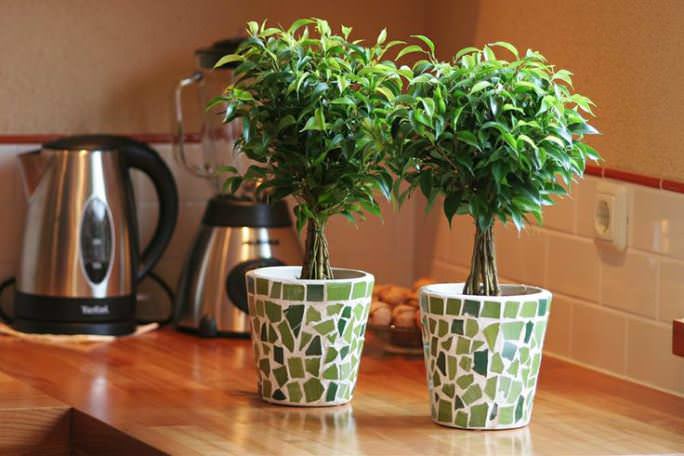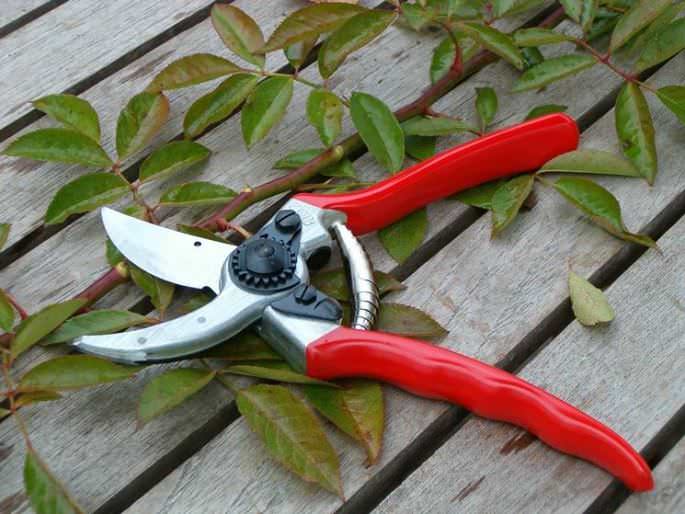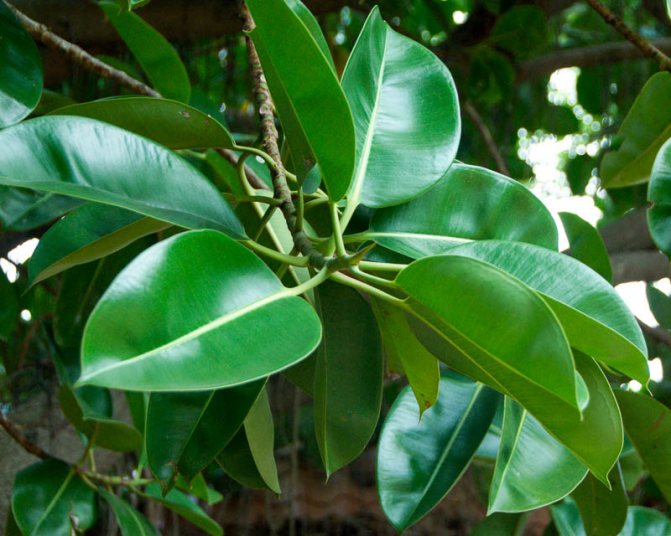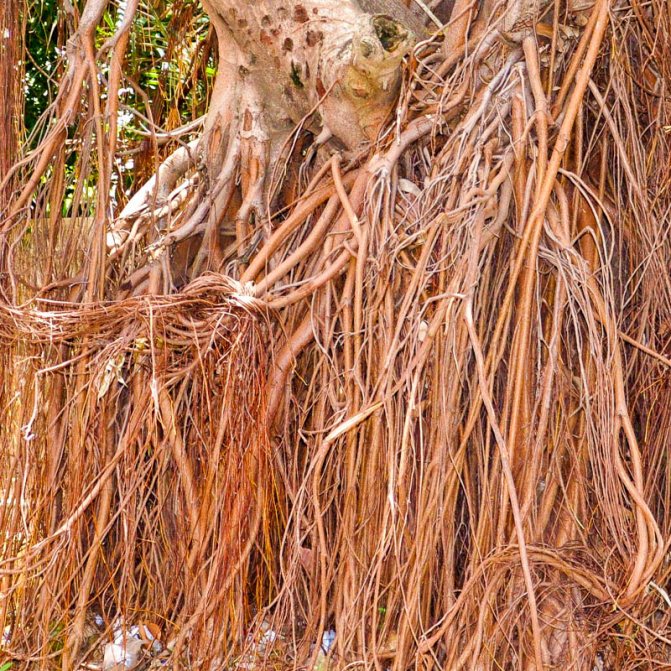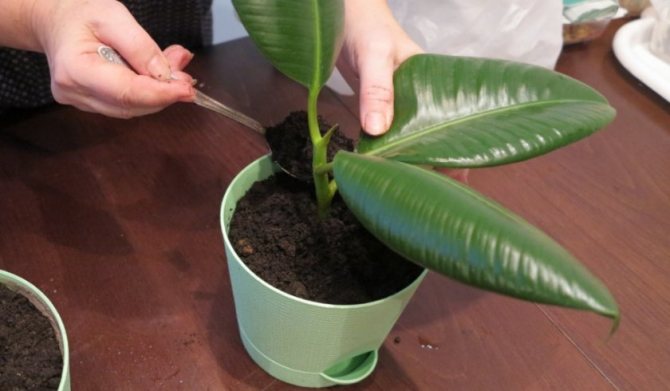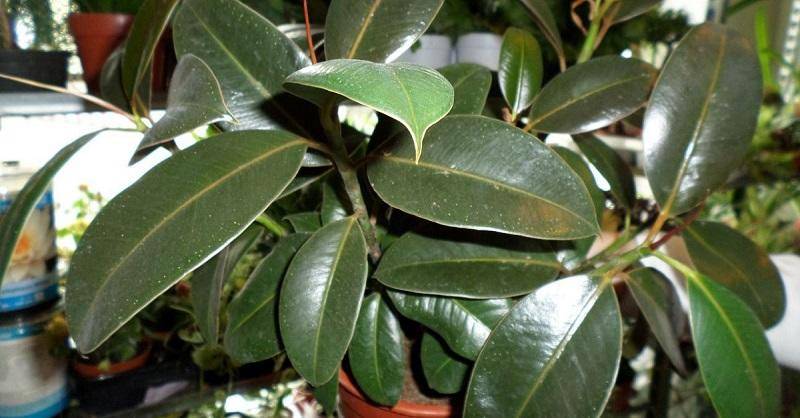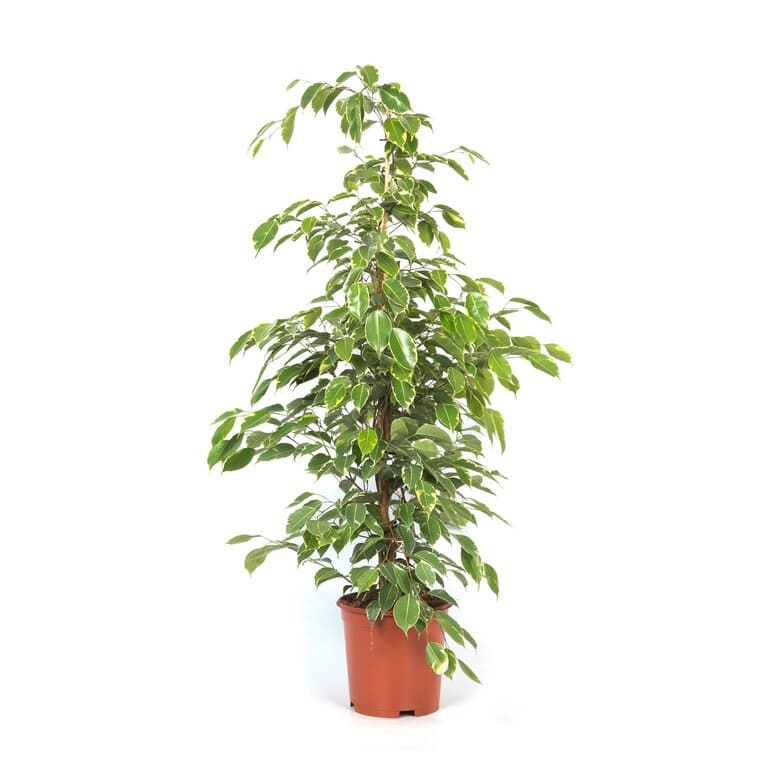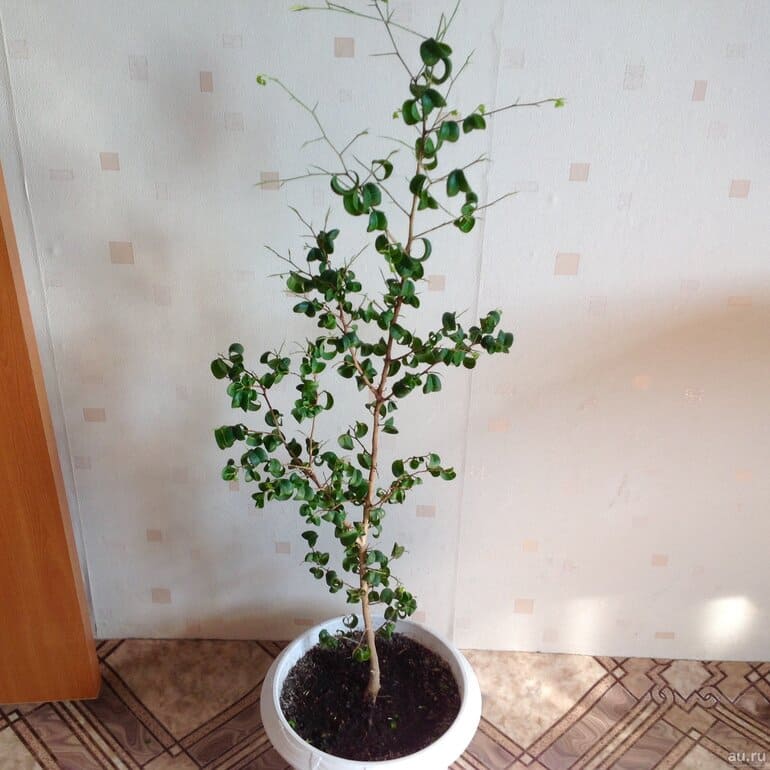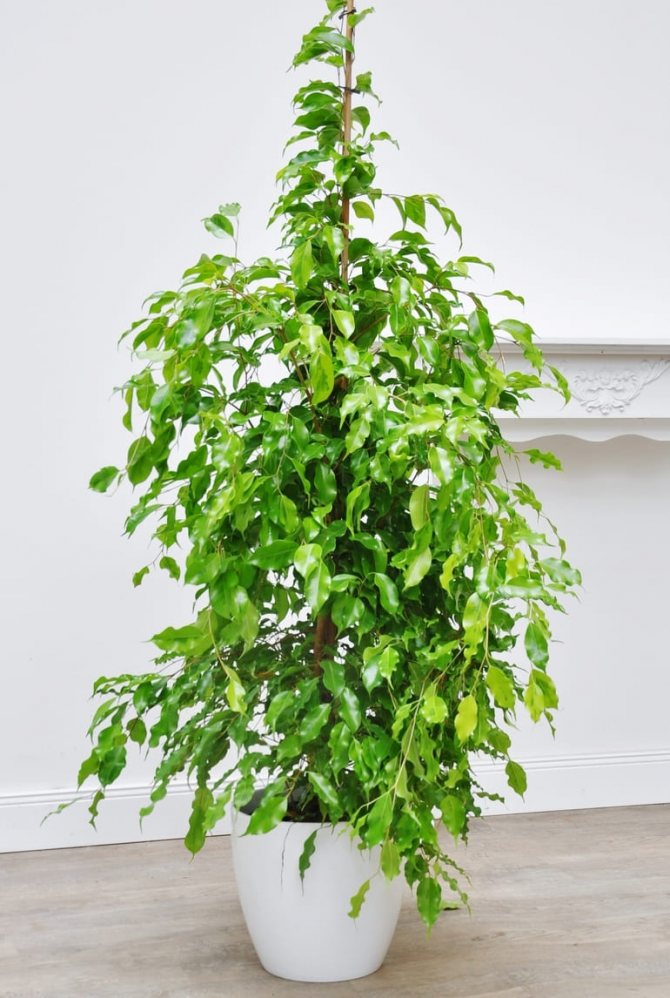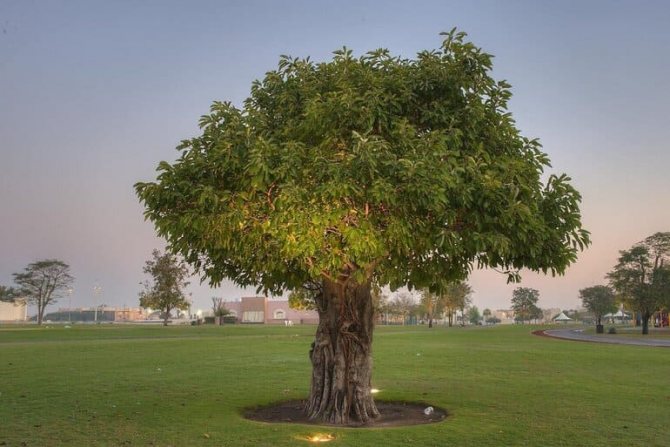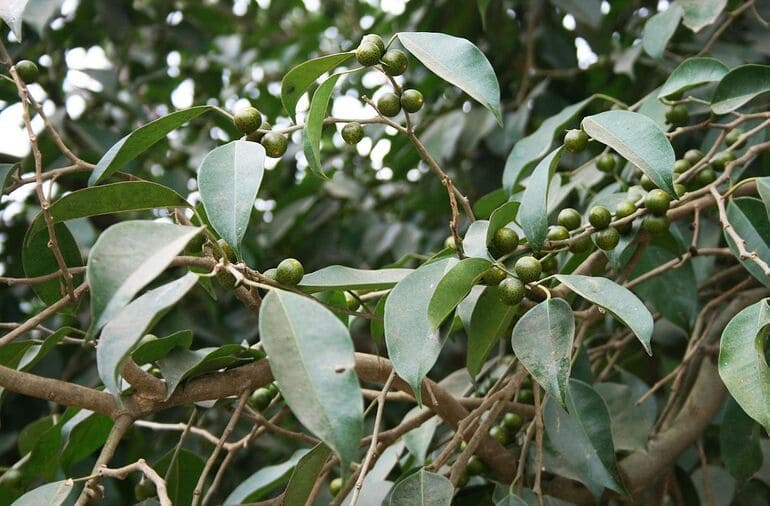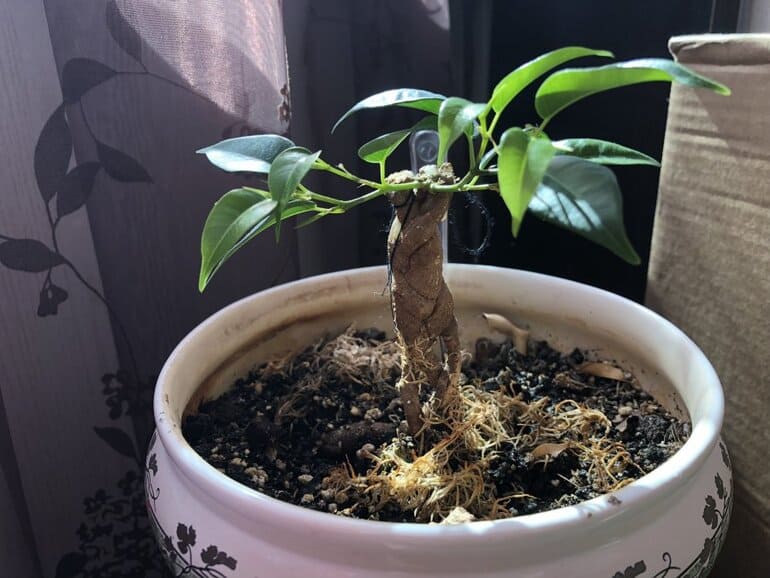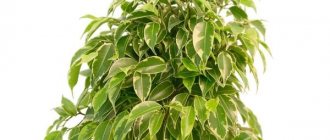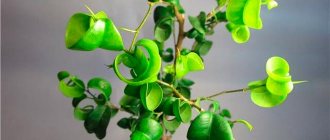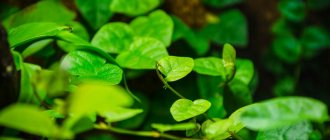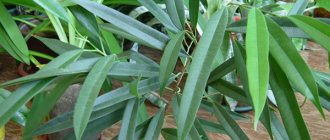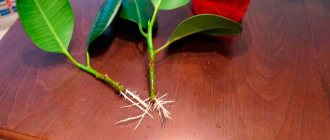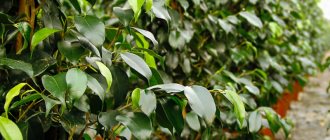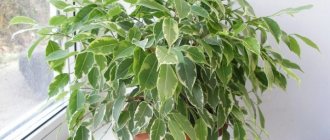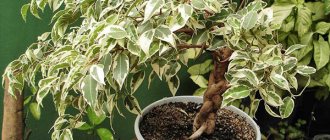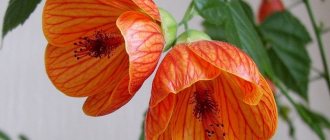1

Somehow it just so happened for me that small flowering flowerpots do not take root - neither bought nor donated. But I really love green plants and I can't imagine my home without them. That is why I have a variety of tree-like green favorites, among which the ficus stands out. He is already 5 years old and during this time I have learned to understand him. Now I want to share my knowledge with you.
History and interesting facts from the life of ficuses
All ficuses, regardless of the type, are thermophilic plants and are predominantly distributed in the Mediterranean countries, on the islands of the Indian and Pacific oceans, countries of West Africa, Latin America. Some varieties of ficuses can be found in the Crimea, Central Asia, and the countries of the Caucasus.
Ficus is a very interesting and ancient plant. The tombs of the mummies of Ancient Egypt, made from African ficus, have survived to our time. And who does not know a fig or a fig tree, it is a fig tree, which has the status of a sacred tree of Muslims.
Ficus belongs to the mulberry family and has up to 800 species. Over the thousands of years of its existence, this common plant has acquired a wide variety of life forms: from giant trees to very small dwarf plants.
And it has always been called the "rubber tree." The explanation is simple. The milk released from the stem and leaves of the ficus is 15 percent rubber. That is why ficus is used in industry.
The fruits of some types of ficuses, for example, figs, contain about 75% sugars and have long been used by humans as a delicacy. In their natural habitat, the fruits of other varieties of ficuses are the main part of the food for forest dwellers.
In Africa, Mexico, villagers use ficus leaves in the construction of housing for roofing houses.
If we talk about domestic ficus, then everyone from childhood knows this common plant, which has a strong trunk, large juicy green leaves. In the past, ficus adorned the windowsills of almost every house, personifying order, stability, peace, and the correct way of life. And even, at one time, it was synonymous with philistinism.
In recent years, the ficus began to experience a huge surge of interest in it from flower growers again, thanks to its extraordinary diversity, beauty, and unpretentiousness. This plant has become one of the main elements of decor, especially in country houses, where it became possible to provide this handsome man with sufficient space and the necessary lighting.
At home, the plant brings many benefits, purifying the air in the room, creating coziness. And this versatile plant has a lot of other useful properties, sometimes unexpected and extremely interesting.
So, let's get to know the ficuses better.
Growing problems
The lower foliage of the tree species of domestic ficus can fall off from time to time due to natural, or physiological, reasons. Stopping growth, as well as active loss of green mass, are most often the result of improper plant care.
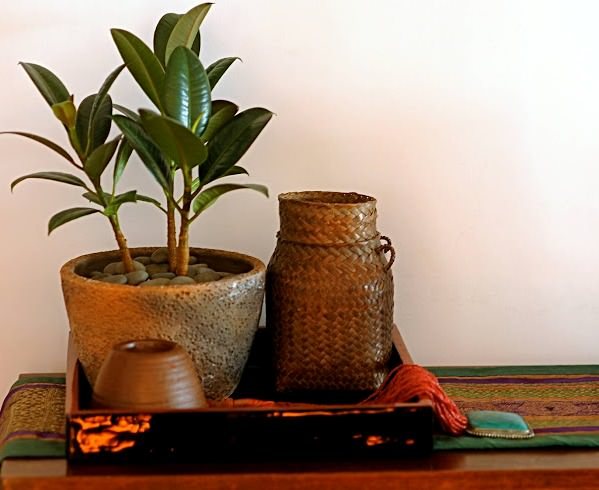

Stopping growth
The main reasons may lie in changing conditions of detention.In addition, the plant can stop growing when exposed to drafts, as well as as a result of temperature changes or when changing lighting. Very often, growth retardation is caused by a lack of nutrients.
Diseases
Very often, as a result of waterlogging or other disturbances in care, the plant is affected fungal diseases or root rot. Decay of the root system is provoked by excessive soil moisture. The same effect is caused by an excess of fertilizers.
Pests
The most common ficus insect pests are spider mites, mealybugs, thrips, scale insects or false scales. Regular examinations allow you to notice plant parasites in a timely manner and take medical measures.
Ficus Bengal
The origin of Bengal ficus leads us to the shores of Sri Lanka, to India, Bangladesh. This is one of the representatives of the mulberry world, absolutely fantastic, from the point of view of an inhabitant of the northern hemisphere of the Earth, ficus banyan. Banyan is the name given to the unique life form of this plant. This amazing tree resembles a fabulous giant and, rather, looks like a dense forest, consisting of many trunks.


How does this process take place?
The trunk of the tree is formed by shoots, from which aerial roots arise. The roots at first have a small thickness, while developing, they begin to reach the ground, take root, and then they develop rapidly and increase in diameter up to several meters. New trunks give new shoots, and this process does not stop, repeating itself over and over again. Over time, one tree gradually turns into a real fairy forest, occupying an area of several hectares.
The most impressive tree of the family is considered the Great Banyan Tree of the Indian Botanical Garden, numbering about three thousand trunks.
In the interior of a city apartment, this tree will look much more modest, but if you decide to keep such a ficus in your home walls, it needs to create a number of conditions. And, if you are not confused by the size of the Bengal ficus, and it can grow up to three meters high, then, observing all the rules of care, you can relax under the crown of a wonderful tree and enjoy the fresh air.
It can be a very miniature bonsai.
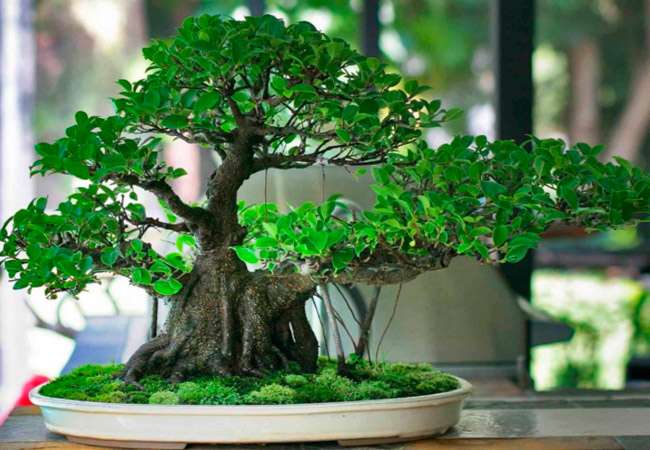

Selection of ready-made soil
For planting ficuses, a substrate is usually chosen, on the package of which there is an inscription "Ficus", "Palm".
Almost every soil producer produces such a product. Their compositions are different. As a rule, they contain vermicompost, peat, sand, expanded clay, lime, dolomite flour, other inert fillers that improve the composition of the substrate, and mineral additives.
Such a soil does not need preliminary treatment, but is already ready for use.
Famous, "Flower Happiness", "Seliger-agro", "Vermion", "Garden of Miracles".


Ficus lyre
This tropical beautiful plant growing in India, West Africa in nature reaches a height of 30 m. It got its name from the bizarre shape of patterned leaves that resemble a lyre - an ancient musical instrument.
Feels great at home, growing up to two meters. Of course, if you have a sufficient area with good lighting. And provided that high humidity and temperature are maintained, you have every chance of growing a tall, elegant, handsome man.
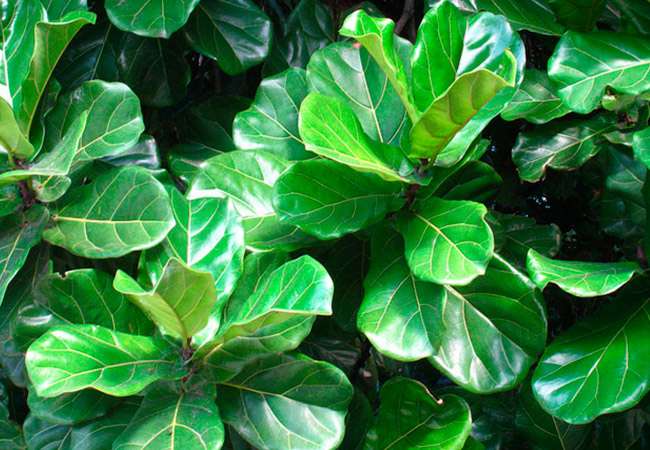

But we must remember that the lyre ficus prefers loneliness. Therefore, it will be uncomfortable to feel in the neighborhood with other plants. This type of ficus requires constant spraying, wiping the leaves with a damp cloth, and a shower. Sometimes you have to use a humidifier.
In a word, this type of ficus is a difficult specimen and requires increased attention and care rules.
Soil requirements
The soil in which it is planted has a great influence on the decorativeness, growth and development of the ficus.


The following requirements are put forward for the soil for this flower:
- nutritional value;
- good conductivity of moisture and oxygen;
- humidity;
- slightly acidic or neutral pH reaction;
- high drainage layer.
Dwarf ficuses
Among the ficuses of giants, which have impressive size and height, tiny ficuses, which have another name - pumila, attract attention.
These ornamental plants, originally from China, Taiwan, Japan, are evergreen, creeping vines. They have small beautiful leaves of a dark green hue, sometimes, depending on the variety, with a white border. The stem of the ficus tree gives off shoots, which over time form aerial roots that can cling to any support and walls.
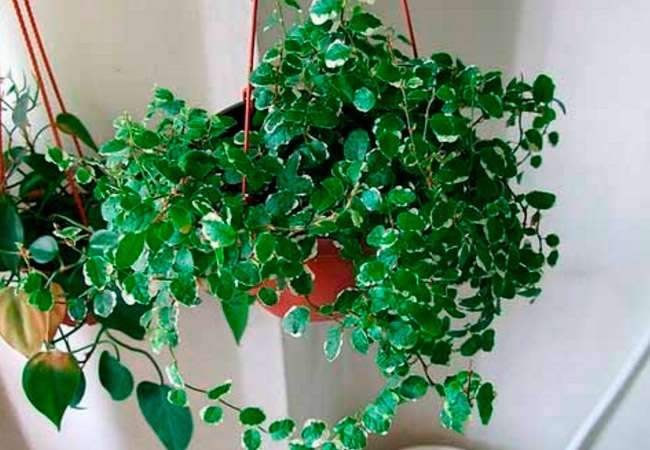

Therefore, dwarf ficuses are often used to frame any surfaces. Houses, gazebos entwined with thick cobwebs of a green carpet look very beautiful. Also, the pumila is planted as an additional decor in one pot with a different type of ficus, and together they look great.
It is also possible to grow a dwarf ficus at home, like any other type of plant, observing the necessary conditions. The plant needs abundant watering, it also loves diffused light with a small amount of direct sunlight. And it feels great by the windows facing west and east.
Dwarf ficus is transplanted annually in the spring using standard ficus soil.
Required soil composition
In order for a flower to be healthy, to have large leaves saturated in color, a lush crown, it must be grown in soil consisting of certain components. The composition of the soil should differ depending on the age of the plant. For young specimens, be looser, for adults - denser.
Young plants should be planted in a substrate that consists of:
- turf land;
- humus;
- sand;
- peat.
Turf is obtained from areas where perennial grasses grow. When humus is added to it, nutritious soil is obtained. Sand and peat are needed as loosening agents to improve the water and air permeability of the soil. Expanded clay, coarse sand, and charcoal are also used as loosening agents. These components prevent moisture stagnation and root decay.
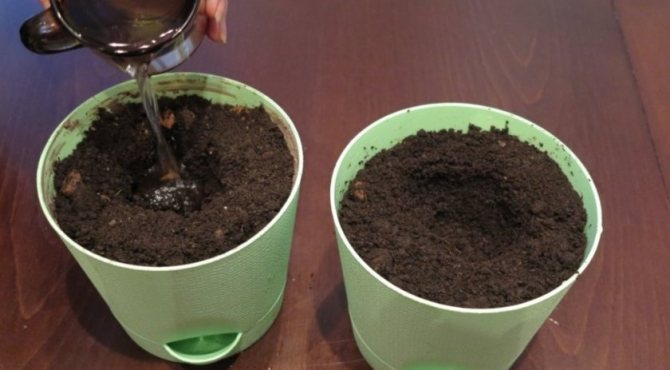

Mature ficuses will need soil consisting of:
Ficus rubber
India, Sri Lanka, Indonesia are considered the birthplace of this plant. The name of this plant speaks for itself. Large-leaved rubbery ficus contains a large percentage of rubber in the sap released from the surface of the leaves. That is why it was previously grown on an industrial scale for the production of rubber. But this juice is not easy - it causes an allergic reaction, dermatitis, if it gets on the skin, because it contains alkaloids and enzymes.
In nature, rubbery ficus grows up to 30-40 meters in height. Its "rubber" properties, trunk and dense roots are used by the inhabitants of southern countries, making suspension bridges from these plants. Such a construction made of a living tree can withstand more than a dozen people, as well as floods.
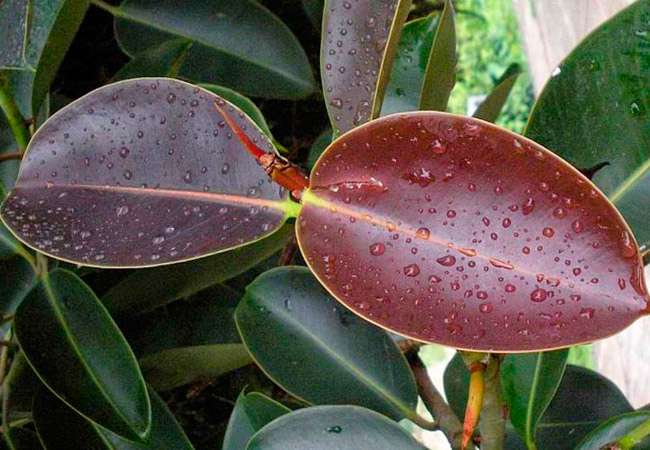

Rubber-bearing ficuses can create banyans in natural habitat, turning into whole groves.
At home, rubbery ficus is also bred and benefits its owners, primarily by clearing the air of harmful impurities. Also loves warmth, humid atmosphere, good lighting, but not in direct sunlight.
If you do not forget to feed the ficus, water it on time, transplant young plants annually and adult ficuses every 2-3 years, then your pet will delight you with its juicy green appearance for a long time, bringing a sense of peace and order to your home.
Is it possible to give such a gift
People who are fond of Feng Shui assure that this deciduous plant is the best housewarming gift, as it can improve the financial situation of its owners. To attract well-being to the house, you should give the newcomer a place in the kitchen. But if problems with business have begun, then we urgently move the green guest to the office.
You can give a houseplant only to people you know well. You should buy and present a gift only in high spirits. Then the green gift will itself be charged with positive energy and will give it to your new home. For a young couple, this is a good sign. Such an offering will help you have children faster.
Ficus sacred
If we talk about the country of origin of this type of ficus, then it will be Burma, Nepal, some regions of Indochina. In nature, like many of his compatriots, they are gigantic in size and grow up to 30 meters in height, have a dense green crown with large leaves.
The sacred ficus can begin its life as an epiphytic plant, fixing itself on other trees or in the recesses of buildings. Then, like many representatives of ficuses, it begins to put down aerial roots, then it is fixed in the soil and turns into a trunk, which is a support for a young plant. And with further development it often turns into a banyan tree.
This type of ficus has a distinctive feature called "guttation". At high humidity, droplets of moisture form on the tips of the leaves of this plant, creating a weeping plant effect.
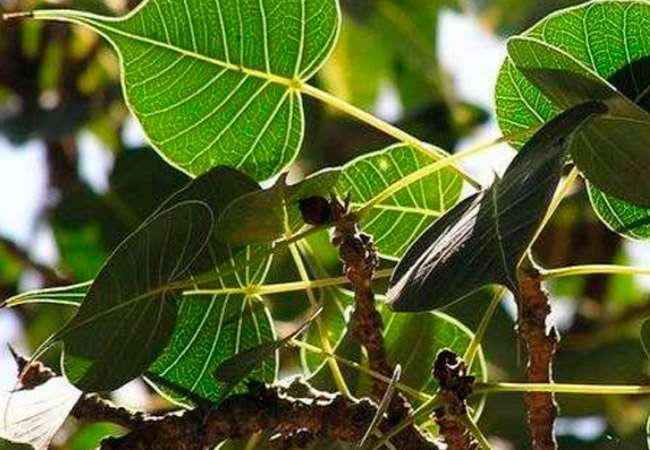

Buddhists consider this type of ficus to be a sacred plant, hence its name. According to legend, an ancient Buddhist prince attained enlightenment under this wonderful plant and became a Buddha. Since then, there has been a tradition of planting sacred ficus near temples, and pilgrims adorn the plant with colorful ribbons with enviable consistency.
Grown at home with the same requirements for the content of the entire ficus family.
Popular talks
- Report Dodder plant Grade 3 message
Dodder is a widespread weed in all countries, which numbers about 150 representatives. It is a rather unpleasant and dangerous neighborhood, as it conducts its life activity at the expense of other plants. - Report Nuclear weapons on class 10 communication
Nuclear weapons are such warheads that have tremendous destructive power. This weapon is based on nuclear fusion, in which the free energy of the atom is released. Nuclear weapons are considered the most powerful weapons of mass destruction. - Post-report on the topic Modification of roots grade 6
The main functions of the roots are to hold the plant and anchor it in the soil, as well as supply it with mineral salts and water. Sometimes additional functions appear at the root, a modification of the rhizome occurs.
Ficus Benjamin
This type of ficus is extremely popular among flower growers because of its decorative qualities and its simple growing and caring process.
In nature, like all of its relatives, it grows in warm countries of Asia and in the north of Australia. It loves a humid habitat and, under natural conditions, can grow to a solid size of 30 m in height. It can form the already familiar banyan trees, but in countries with a more arid climate it remains a single-stemmed tree.
In its natural habitat, it is often used in the form of "hedges" and for creating topiary forms, when a geometric haircut is applied to plants to give them certain shapes.


It looks very attractive on the windowsills of apartments, hanging branches down a little, for which it received the name "weeping ficus". Leaves, depending on the variety, of different sizes (from 3 to 10 cm), shape and color shades.But regardless of the variety, milky juice is released from the surface of the ficus leaves, which can cause an allergic reaction.
Ficus Benjamin, like no other, has a large number of varieties. They differ in size, from small plants to 4-meter bogatyrs, in the shape and color of the leaf. Can be trees or shrubs.
Among all the variety, ficus varieties stand out for their special unpretentiousness:
- Daniel: dark green leaves 6 cm
- Golden Monique: light green-golden leaves with a unique pattern
- Curly: leaves about 5 cm with a strongly curved outline and a white border
- Golden King: green leaves with a yellow stripe around the edge
- Monique: corrugated leaves.
And many other varieties, each with its own characteristics and charm.
Ficus Benjamin is well mastered in the home interior, thermophilic, requires watering only when the top layer of the earth dries up. In winter, they water less often, but they follow the roots, preventing drying out.
The types of ficus do not end there, the story can be continued for a long time, but you met the most common inhabitants of our window sills. In future publications, I will try to talk about the rules for caring for them, about possible diseases or indoor pests that can settle on these majestic plants.
Flower characteristic
The indoor plant ficus is characterized by a variety of species that differ in height, shape of branches and leaves, as well as color.
Description of the plant
Leaves can be alternate, less often opposite, whole, serrated or lobed. Stipules are large in size. All parts of the ficus are characterized by the presence of milky sap, which can be used for medicinal purposes. Ficus flowers are collected in the axillary type of inflorescences. They can be either single or grouped, forming an ear or a kind of brush.
Benefit and harm
A significant part of the species of ficus are useful plants. In the industrial field, varieties that make it possible to obtain rubber play an important role. These plants include Elastica, Nymphaeifolia, Populnea, Radula, Sylvestris, Elliptica, and Prinoiddes. Several species, including Carica, Sycomorus, Religiosa, Rumphii and Bengalensis, produce edible fruits that are high in sugars. Ficus foliage Carica is used as a medicinal raw material.


Interesting information [edit | edit code]
Ficus benjamin is the symbol tree of Bangkok, the capital of Thailand.
Often, to give the trunk of a plant thickness and texture when grown for decorative purposes, 2-3 plants are planted together and their trunks are intertwined in a pigtail or plait. As they grow, the trunks grow together and form beautiful growths.
In the Royal Botanic Garden (Peradeniya) in Sri Lanka, a ficus grows 150 years old and has a crown area of 2500 square meters. Local residents gave him the name "Turtle" for the similarity of the shape of the crown with this animal.


Ficus is one of the most common indoor plants. He took root in our homes so much that we forgot about his real homeland - the subtropical and tropical forests of Asia and Africa. There are more than 2000 species in totalbut only about 20 species are domestic breeds. But can they bloom?
Hedge
Spikelets and spirals can be weaved from ficus, even a hedge can be made of them. To do this, young plants can be planted in an even row at the same distance. Ficuses that have been planted in a circle look very beautiful.
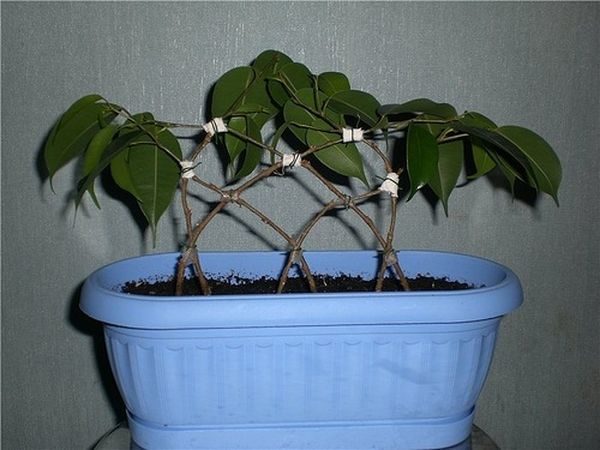

Read all about what variations of elegant ficus planting exist here.
Morphology [edit | edit code]
Shoots are upright. The stem is round. Leaves are glossy, smooth, thin-skinned, oblong-oval with a pointed apex, 6-13 cm long and 2-6 cm wide. The arrangement of leaves on the branches is alternate, the leaves are formed in one plane. The edge of the sheet is full-edged.The venation is pinnate, the central vein is poorly expressed, with 8-12 pairs of lateral veins. The petiole is about 2 cm.
The bark is gray with sparse brown streaks. The crown is wide, the branches drooping. Fruits - syconia - round or oblong, paired, up to 2 cm in diameter, red or orange, inedible.
Title [edit | edit code]
According to most sources, the appendix "benjamina" comes from the English "benjamin" (benzoy), which goes back to the Arabic "luban jawi" ("Javanese incense"). According to this version, the Europeans mistakenly believed that the ficus benjamin is a source of benzoic resin (in fact, the latter is produced by plants of the Styrax genus) [2] [3] [4].
An alternative variant of etymology derives "benjamina" from the Sanskrit "banij" - "banyan" (actually banyan is another representative of the Fikusov family). According to the third, less common version, the correct reading of the Latin taxon Ficus benjamina
is an
ficus benjamin
, and it comes from the Indian word "benyan" / "banyan", also meaning banyan. The key similarity between the wild Benjamin ficus and the banyan tree, which could have prompted early modern naturalists to give such a name to the ficus, is apparently the spreading crown of the tree [5] [6].
In addition, in Russian-language sources, the erroneous spelling is widespread ficus benjamin
(with a capital letter), however, no evidence of any connection between the name of the species and the anthroponym "Benjamin" was found.
The necessary conditions
Ficus is not a very capricious plant. For him, you should choose a sufficiently lit place, but the light should not be direct. The western and eastern windows are considered favorable for ficus. If there is a lack of light, the plant will have fewer leaves.
Ficus is a thermophilic plant... In the summer, when all the flowers are put on the balcony, he is left in the apartment. It does not tolerate drafts and strong winds. A comfortable temperature is considered to be from 15 to 20 degrees, and in summer - no more than 30.
Ficus is not the only decorative deciduous plant successfully grown in our apartments. We bring to your attention a series of materials about indoor flowers of the same group: avocado, banana, trees, bushy plants, liana, false palms, orchids, ferns. And also plants with spear-shaped leaves, plants with gramineous leaves, carnivorous plants.
Landing
Adult plant
To transplant a store-bought adult ficus into a permanent pot, you need:
- Tilt the plant to one side so that it can be pulled out of the pot without damage.
- Then the roots are freed, and the root collar is cleaned from the transport soil.
- It is important to close the drainage hole with a mesh, and then pour a drainage layer of expanded clay and sand on top.
- Then a thin layer of earth is poured and tamped with your fingers. Without fanaticism, it is not necessary to deprive the soil of permeability.
- To make it convenient to water the plant, do not add soil to the very top - leave 2 cm to the edge of the pot.
No need to deepen the root collar of the plant too much... This can cause leaf shedding and brown spots.
Attention! When transplanting, it is necessary to provide for the installation of a support that will support the crown of the plant.
How to correctly and painlessly transplant ficus, read this article.
Seed


Soak ficus seeds for a day in a special solution. The use of Humate, Heteroauxin, Epin will increase seed germination and contribute to an increase in disease resistance.
Plant the prepared seeds in the ground, which you need to prepare yourself. It is better to use light soil, adding a little sand to it.... The substrate should be homogeneous, crumbly.
It is better to choose containers for germination wide and shallow. It is worth planting a few seeds, then the germination rate will be one hundred percent, and from the obtained seedlings it will be possible to select several of the tallest and strongest specimens.
- Seed planting is carried out to a depth of about 1 cm.
- The distance between them should be 1.5 cm.
- Sprinkle with substrate or coarse sand, it will absorb excess moisture.
- Cover with a greenhouse, ventilate from time to time.
We also suggest that you familiarize yourself with another article on the topic of growing ficuses at home.
Signs of improperly selected land
With improper care or inappropriate microclimate, the plant will experience changes in its appearance.
If the soil does not suit him, then this can be recognized by the following signs:
- change in the color of the sheets;
- falling foliage;
- defeat by mushroom mosquitoes.
If such problems arise, the flower should be transplanted into new soil made up of the correct ingredients. Fungus mosquitoes are destroyed by insecticides: "Decis", "Aktellik", "Agravertin", "Aktara", "Intavir".
If you are one of those who like to keep indoor plants and decide to plant a ficus, you need to provide him with the kind of soil that nature intended for him. Ficus won't need much attention. The one who grows a flower for the first time will also cope with its planting and care.
>


